The White Moon Gallery presents

|
The Goddess |
||
|
|

|
|
|
|
(Roman) |
|||
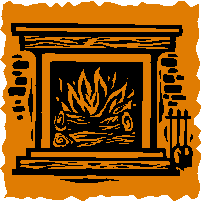
|
|||
Also known as Hestia (Greek), Vesta is the Goddess of the hearth and part of every fire. “Vesta commands the sacred fires of the hearth, the heart of spiritual and emotional stability in your home.” (Telesco, 365 Goddess; Not much is known about Vesta’s origins, except that she was first worshipped in Roman homes on a personal level and later spread to become a state cult, which ended in approximately 394 A.D. Vesta is most often portrayed in a long dress, head covered, and veiled
|
|
|
|
|
Sacred Animal: Ass/Donkey |
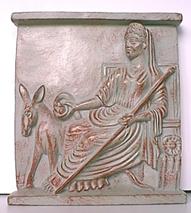
|
Vesta with her donkey Pales |
|
|
|
|
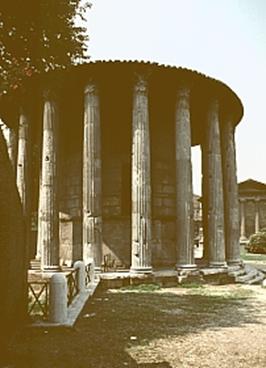
|
Vesta’s public shrine contained a sacred fire to Rome. It was tended by
the six Vestal Virgins, Priestess of Vesta. The Vestals were held in
high regard in Roman society, were chosen around the age of 6-10 from elite families,
and served for a 30 year term. The Vestals took a strict vow/law of
chastity. If the vow was broken, both the Vestal and their partner were
put to death. After serving as a Vestal for 30 years, they were free to
marry but most chose to serve the Goddess Vesta for the remainder of their
lives. It is told that a condemned criminal was released from his
sentence if he were to happen upon a Vestal.
|
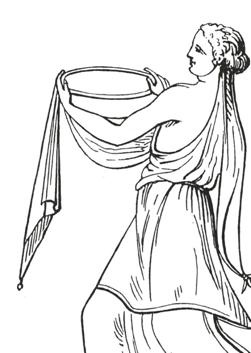
|
The Vestal Virgins tended the sacred flame in the Temple. The Goddess Vesta’s main festival, the Vestalia, was observed from June 7-15. On the first day of festival, the inner sanctum of the Temple was opened for women who came to bring offerings bare-footed. The Temple was ritually cleansed on the last day of festival and was then again closed to the public. Before Temples and public shrines were created, Vesta was honored and held sacred within private homes through personal shrines and the hearth fires.
|
|
|
|
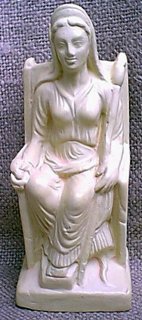
|
They Say She is Veiled
“They say she is veiled |
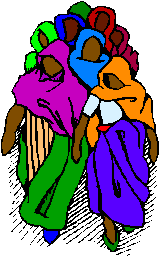
|
|
|
|
|
Modern Day Vestalia Observance
(by Jade)
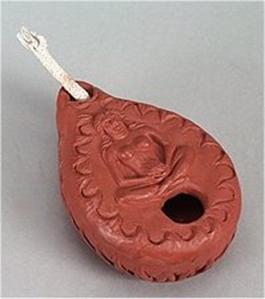
|
When: June 7-15 |
|
|
|
|
Kitchen Magic: Handmade bread in Honor of Vesta
(by Jade)
Before beginning this magic, cleanse and bless all your tools and ingredients. Don’t forget your oven, the sacred fire of Vesta! Hint: stir ingredients clockwise, the direction of increase, while focusing on bringing Vesta’s blessing to your bread and all who partake of it. The following recipe has been passed down in my husband’s family for generations. This makes quite a few loaves which makes this perfect for sharing the blessings of Vesta with others! If you would rather not make handmade bread, you can use a bread machine recipe of your choosing or even frozen bread dough.
|
Grandma Lynn’s Bread 4-5 Cups warm water 4 T. dry yeast 2 T. salt 3/4 Cup dry milk 1/2 Cup potato flakes (optional) 1 Cup Oil or Crisco 2 eggs 1 Cup sugar or honey |

|
|
Dissolve yeast in water and sugar. Add other ingredients. It helps to use a electric mixer. Now start adding flour, add enough to make a soft dough. Let rise and punch down. Let rise again until double, and punch down. Mold into loaves and place in greased bread pans. Let rise again and bake 350 degrees for about 35 minutes (depending on size of the bread pans). Optional: brush tops of loaves with melted butter as soon as you take them out of the oven. |
|
Make sure to offer the first slice from the first loaf of bread to the creatures outside in honor of the Goddess Vesta. You may also want to give a loaf to an elderly neighbor or loved one. This could be incorporated into a ritual if done on one of Vesta’s festival days.
|
|
|
|
Prayer to Vesta
|
|
Vesta, Bless this hearth and home. Bring health to our bellies and strength to
our bones. Bless those whose arms are empty and long for a babe to
nourish and bring up to love and honor the Goddess in her many faces.
Bless those that hunger, and guide our hands to serve them. Bless us
all with love and peace, and help us to remember you in all fires and flame.” |
|
|
|
|
|
Sources:
Books:
365 Goddess by Patricia Telesco
The Witches’ Goddess by Janet and Stewart Farrar
Her Words edited by Burleigh Muten
Other:
Personal family bread recipe
Original work, ritual, prayer and thoughts by Jade
|
|
|
|